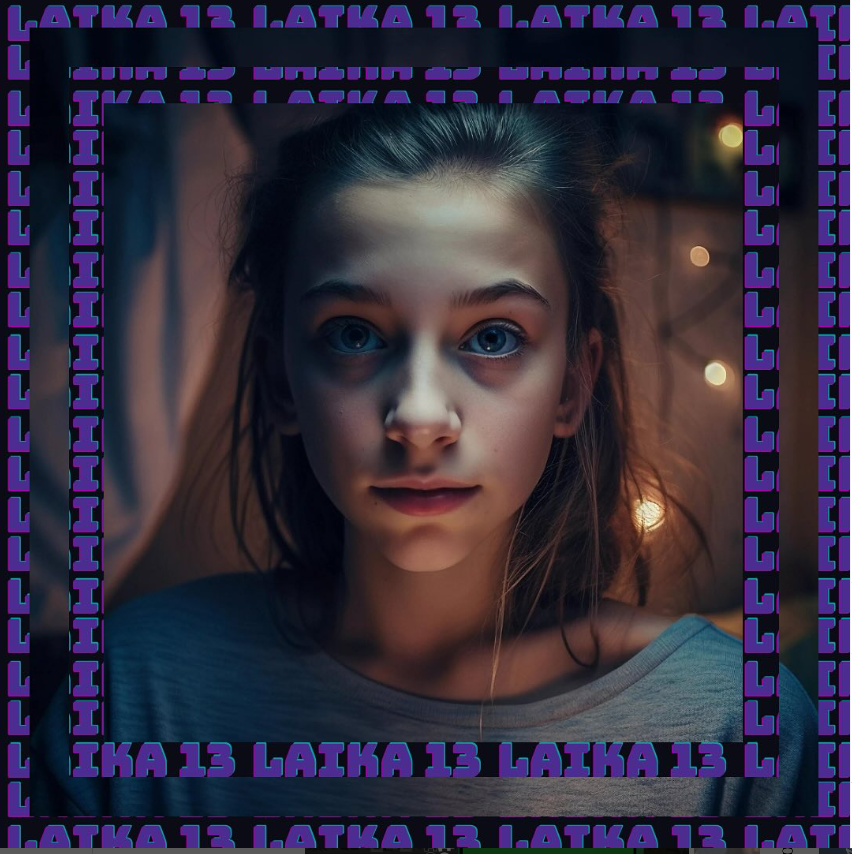Campaign Overview
In today’s digital era, Laika 13, an AI-generated virtual teenager, sheds light on the risks associated with excessive social media exposure. Raised solely on popular digital platforms, Laika’s personality, values, and behavior reflect the influence of constant online content. Her story opens a unique opportunity for mental health research, offering insights into the potential perils of prolonged social media use, especially for young people.
Objective: Raise awareness of the negative effects of excessive social media use on mental health, with a focus on young audiences.
Target Audience: Young people, parents, educators, policymakers, and healthcare professionals.
Strategy: Use Laika 13 as a central character to highlight the dangers of social media addiction through a compelling narrative.
Campaign Execution
Character Development
Laika 13’s backstory reflects the real-world effects of social media addiction. Initially excited by social media, she gradually loses real-life connections, leading to a decline in her mental well-being. Her experiences illustrate the potential consequences of excessive screen time.
Content Creation
- Articles: Publish in-depth articles exploring the psychological and social impact of Laika 13’s journey.
- Social Media Posts: Share engaging posts, focusing on key moments from Laika’s story to drive discussions.
- Expert Interviews: Feature experts in mental health, technology, and social media to provide credible insights.
- Visual Content: Develop infographics, videos, and images that reinforce the campaign’s message.
Media Outreach
Pitch the campaign to traditional media outlets such as newspapers and television to increase visibility.
Social Media Engagement
Engage with the audience through social media by responding to comments, questions, and concerns to maintain high interaction levels.
Results
- Viral Reach: The campaign achieved significant viral reach, trending on social media platforms and being shared widely across the internet.
- Social Media Engagement: The campaign sparked numerous discussions and debates on social media, generating a high level of engagement and interaction.
- Brand Awareness: While the specific brand behind the campaign is not explicitly mentioned, the campaign likely increased awareness of the organization’s commitment to mental health and social responsibility.
- Cultural Impact: The campaign contributed to a broader conversation about the potential negative effects of social media, particularly on young people. Many individuals shared personal experiences and expressed concerns about their own or their children’s social media use.
Marketing Theories and Models
Several marketing theories and models can be applied to analyze the Laika 13 campaign:
- Social Marketing: The campaign focused on promoting a positive social behavior (responsible social media use) and addressing a social issue (mental health).
- Diffusion of Innovation: The campaign aimed to spread awareness and adoption of a new idea or behavior (responsible social media use) through various channels.
- Persuasion: The campaign used persuasive techniques, such as storytelling, emotional appeals, and social proof, to influence attitudes and behaviors.
- Public Relations: The campaign leveraged media relations and public engagement to reach a wider audience and generate positive publicity.
Overall, the Laika 13 campaign effectively used a combination of these marketing theories and models to create a powerful and impactful message about the importance of responsible social media use. The campaign’s success can be attributed to its compelling narrative, strong media strategy, and ability to resonate with a wide audience.

